Common Core Aligned Games
|
|
3x4=SWAT! (3·4 = Klatsch!)3 Math 3 - Multiplication and Division with Units... A player chooses a numbered flower on his/her turn. ("Let's multiply by fives.") When everyone is ready, roll a die, and quickly multiply the numbers on each. Be the first to swat the fly card with the correct product to earn a wooden fly token. Collect eight tokens to win. An advanced variant uses two ten sided dice and all of the bugs, with students quickly multiplying the results of the dice and swatting the answer. |
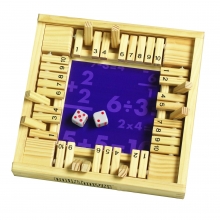 |
4 Way Countdown1 Math 1 - Sums and Differences to 10 | 3 Math 1 - Properties of Multiplication and... | K Math 1 - Numbers to 10 | PK.CC - Counting & Cardinality | Pre-K Math 1 - Counting to 5 | 1.NBT - Number & Operations in Base Ten | 2 Math 6 - Foundations of Multiplication and... Players compete to achieve all numbers from 1 through 10 using 2 dice and simple math. Score is marked with wooden pegs that are flipped when a number is achieved. Basically a four player version of Shut the Box. But it includes some variation. Players may not use the two dice as separate numbers to flip two pegs. Instead they use the two numbers with a basic math operand to create a single number to choose a peg. Example: Dice roll 2 and 6 yields 2 + 6 = 8 6 – 2 = 4 6 ÷ 2 = 3 There are only 10 pegs so 6 x 2 = 12 is out. |
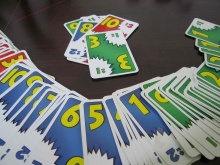 |
7 Ate 92 Math 1 - Sums and Differences to 20 It’s as easy as 1, 2, 3! Players add, or subtract, 1, 2, or 3 to the number on the top card on the pile to determine if they have a card that can be played next. Sounds simple, but with everyone playing simultaneously, the options are constantly changing. The first player out of cards wins! |
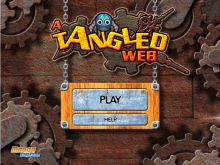 |
A Tangled WebGEO M1 - Congruence, Proof, and Constructions | 4 Math 4 - Angle Measure and Plane Figures | GEO M5 - Circles with and Without Coordinates In this math game you control a tiny robotic spider named Itzi, who lives with his family at the top of a strange old grandfather clock. One dark night, the clock struck midnight with a mighty mechanical ‘Clang!’. So loud was the noise that the whole clock rattled and shook, sending Itzi and his family tumbling down through its rusty innards. Now Itzi must climb back up the clock, rescue his stranded family members, and return home! On each level Itzi must find a safe path through an intricate maze of tangled webs, solving cunning angle puzzles as he goes. You’ll need brains and bravery to succeed, so get going – Itzi’s family are depending on you! |
|
|
Aunt Trudel's Treasures3 Math 2 - Place Value and Problem Solving with... Are you ready to pick up a bargain? You can get as many goods as you want, but you can't take more than Aunt Trudel will allow you to take – and she's a bit of a weirdo when it comes to making sales. If your goods weigh more than the goods that Aunt Trudel has set aside, then you get nothing! In Aunt Trudel's Treasures, players shop from a 5x5 array of goods, each with their own basket. One item – a coat hanger, a vase, a dollhouse couch – is placed on most of the spaces in the array, while a few spaces are covered with vouchers. Three items are set aside at random, and those are the goods that Aunt Trudel will weigh at checkout to see whether you'd met her tough standards. All players start on the same corner of the game board with a shopping basket. On a turn, a player rolls a die, moves her basket that many spaces around the game board in a clockwise direction, then picks up one item (or voucher) from the row that her basket is next to and places it in her basket. If a player's basket lands on the same location as an opponent's basket, then the player can take an item from the opponent instead. If a player picks up a voucher, she can exchange it later for another item on the board, putting the voucher in its place, in addition to taking an item. The first player to circle the board has the option of then moving counter-clockwise to pick up more goods; everyone else is finished once they circle the game board. Each player in turn then weighs her goods against Aunt Trudel's holdings using the funky cardboard scale included in the box. If your goods weight more than Trudel's, you're out; if not, then you're still in the game. Of those players, whoever has the heaviest goods wins! |
|
|
Bazaar6 Math 4 - Expressions and Equations The components of Bazaar include a whole bunch of little chips, in five colors. At the start of the game, two equation cards are randomly chosen. Each equation card has five equations on it, for a total of ten equations that will be in effect for the duration of the game. The equations state equivalences between certain combinations of colors, for example: Red = Green Green Green Yellow = Blue Blue Red Four target cards are turned up, each with some combination of five chips represented on the target card (so a typical target card might be Green Green Blue Blue Blue). On your turn, you roll a colored die to randomly pick a colored chip for yourself, or you can make one exchange of your colored chips based on the equations. The goal is to end up with the right combination of chips to get one of the target cards. You want to do this quickly – and even more importantly, with as few chips left over as possible after you've purchased the target card – because this is how you score points. |
 |
BolidePRE-CALC M2 - Vectors and Matrices Take total control of your car by the innovative move game rule! Work out the best routes along the track and push you car at the speed you want, racing opponents and making breathtaking overtakings or extreme brakings! But make sure you preserve your engine and tires for the last part of the race! Move on to the advanced level! Besides your driving skills, you will have to demonstrate your strategic abilities by choosing the best tires, by deciding between pit stop tactics or long race ones and by identifying the optimum set-up to push your car ahead of all others! Furthermore... unforeseen events and risky situations, ruled by the die, will add a touch of the unexpected to the race, improving the level of simulation and play. Do you want to be a legendary driver? Become a part of Bolide history... |
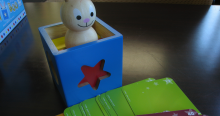 |
Bunny BooPre-K Math 2 - Shapes "Pull a rabbit out of the box!" Bunny Peek-a-Boo is a 3D puzzle for young children. It comes with four big, sturdy wooden blocks, and kids arrange the blocks to match each challenge. Some challenges may look very similar, but the solution can be completely different depending on things like how far the ears of the rabbit stick out. With Bunny Peek-a-Boo, children will have fun discovering the world of 3D spatial perception, an important skill in reading and mathematical reasoning. Children can solve the 60 challenges or just play with the blocks as wooden toys, exploring concepts like above/below, inside/outside, visible/hidden, etc. |
|
|
Calculino1 Math 1 - Sums and Differences to 10 | K Math 1 - Numbers to 10 | 1 Math 2 - Introduction to Place Value Through... Help Calculino to take four blue, four yellow and four red starfishes on board as quickly as possible to begin the long journey through the ocean. A lot of concentration, strategy and mathematical knowledge is required. |
|
|
Can't Stop2 Math 1 - Sums and Differences to 20 | 7 Math 5 - Statistics and Probability | PRE-CALC M5 - Probability and Statistics In this Sid Sackson classic, players must press their luck with dice and choose combinations tactically to close out three columns. The board has one column for each possible total of two six-sided dice, but the number of spaces in each column varies: the more probable a total, the more spaces in that column and the more rolls it takes to complete. On their turn, a player rolls four dice and arranges them in duos: 1 4 5 6 can become 1+4 and 5+6 for 5 & 11, 1+5 and 4+6 for 6 & 10, or 1+6 and 4+5 for 7 & 9. The player places or advances progress markers in the open column(s) associated with their chosen totals, then chooses whether to roll again or end their turn and replace the progress markers with markers of their color. A player can only advance three different columns in a turn and cannot advance a column which any player has closed out by reaching the end space; if a roll doesn’t result in any legal plays, the turn ends with that turn’s progress lost. |
|
|
Cardline: Animals3 Math 2 - Place Value and Problem Solving with... | 5 M2A - Biodiversity in Rainforests of the... | 1 D8 - Animals and Habitats | 2 D8 - Insects Cardline: Animals is a card game played with approximately 100 cards. Both sides of each card depict an animal, its name, and its class (amphibian, mammal, etc.), while its average length, weight, and lifespan are printed on only one side of the card. For each game, players decide before playing whether they're comparing animal lengths, weights, or lifespans. At the start of the game, each player places a number of animal cards on the table in front of her with the characteristics hidden. One card is placed in the center of the table with its characteristics revealed. Players then take turns placing a card from their tableau in a row on the table; a player can place a card between any two other cards. After placing the card, the player reveals the characteristics on it. If the card was placed correctly – that is, with the particular characteristic in numerical order compared to all other cards on the table – the card stays in place; otherwise the card is removed from play and the player takes another card from the deck and adds it to her tableau. The first player to get rid of all her cards by placing them correctly wins. If multiple players go out in the same round, then everyone else is eliminated from play and each of those players are dealt one more card for another round of play. If only one player has no cards after a bonus round, she wins; otherwise play continues until a single player goes out. |
|
|
Casa BananaPre-K Math 1 - Counting to 5 In the jungle, the animals are on the loose! The Monkey King invites his animal friends from around the world. The more animals ascend to the tree house, the more wobbly it becomes. Strategy is therefore asked – How do you get most of the animals on the tree house without collapsing it or the animals falling down. |
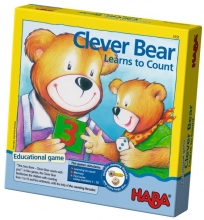 |
Clever Bear Learns to CountK Math 1 - Numbers to 10 Part of the "LernSpiel" (English = Learning Game) series from Haba, this is a series of counting games for young children using a very cute counting string with wooden bear, 4 sets of 1-10 counting tiles (marked with dice faces, numbers, fingers & cubes) and three different dice (marked with numbers, dice faces & fingers). |
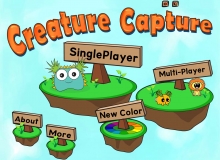 |
Creature Capture5 Math 2 - Multi-Digit Whole Number and Decimal... | 5 Math 3 - Addition and Subtraction of Fractions | 5 Math 4 - Multiplication and Division of... | 3 Math 5 - Fractions as Numbers on the Number Line | 4 Math 5 - Fraction Equivalence, Ordering, and... | 4 Math 6 - Decimal Fractions | 2 Math 8 - Time, Shapes, and Fractions as Equal... Creature Capture is a fun and colorful fraction-based card game where the goal of the game is to own more of the board than your opponent! Players engage in both solo and multiplayer gameplay as they collect cards and build strategies. Opponents take turns playing their creature-themed cards to a central board, causing battles between opposing cards along the way. The victor of each battle is determined by one of three battle rules: largest number wins, smallest number wins, and closest number to ½ wins. Players can use power cards to augment any creature, allowing them to perform complex fraction-based arithmetic to win battles. Additionally, players build decks from the cards they have collected and challenge their friends to a Creature Capture duel! These duels can be played online or offline. Creature Capture currently features over 30 levels, with new levels and features on the way. |
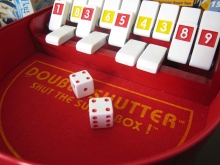 |
Double Shutter2 Math 1 - Sums and Differences to 20 Double Shutter is an enticing and irresistible game that combines tactical choices, luck and fun for the whole family. Roll two dice, add the dots and find the best combination of numbers to shut two rows of nine tiles. |
|
|
Elementary Math Escape Experience3 Math 1 - Properties of Multiplication and... | 3.OA - Operations and Algebraic Thinking | 3 Math 4 - Multiplication and Area | 3.MD - Measurement & Data | 3 Math 5 - Fractions as Numbers on the Number Line | 3 Math 6 - Collecting and Displaying Data The Chinese Cultural Museum is looking for volunteers to work at their prestigious institution. To help narrow down the competition, the museum has put together a series of puzzles and obstacles that interested applicants have to make their way through. Can the group use their understanding of Chinese Culture and math skills to make their way through and get the positions? This kit contains 3 identical escape kits to accommodate a whole class of students. The kit focuses on 3rd grade math curriculum while engaging students with Chinese culture and artifacts. |
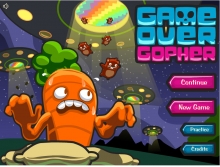 |
Game Over Gopher6 Math 3 - Rational Numbers | 8 Math 3 - Similarity | 5 Math 6 - Problem Solving with the Coordinate... Hungry gophers are after the prized carrot. Defend the carrot by placing units on a coordinate grid. A finalist in the 2012 Serious Games Showcase & Challenge. |
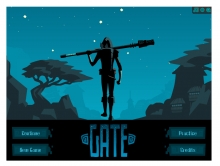 |
Gate4 Math 1 - Place Value, Rounding, and Algorithms... | 5 Math 1 - Place Value and Decimal Fractions | 2 Math 3 - Place Value, Counting, and Comparison... | 2 Math 4 - Addition and Subtraction Within 200... Shadows are corrupting the land. Restore the balance of nature by exploring place value. Gate guides students in: Lowering intimidation about large numbers and decimals. Understanding the meaning of place value. Realizing that the same mathematical concepts that apply to the "easy" integers apply to every order of magnitude. |
|
|
Giant Dwarf (Zwerg Riese)2 Math 2 - Addition and Subtraction of Length... Dwarves want gold. You know that, I know that, everyone knows that. But since their legs are short, walking from location to location to collect gold takes a long time – which is why they don't walk on their own, but instead use a giant for transportation. The only problem is that all the dwarves must share the same giant, which means you can't always get where you want. In Zwerg Riese, the dwarven players want to make use of their giantmobile in order to reach towns and claim the gold sitting there. (Why don't townspeople want the gold themselves? I'm hesitant to ask.) In order to move the giant, though, you must pay him a landscape card to match the land through which you're moving. You'll need to manage your hand of land cards carefully in order to keep moving and not let another dwarf take the gold you were eyeing. Zwerg Riese includes variant rules for more experienced dwarves, one that puts a storm cloud in play on the board. |
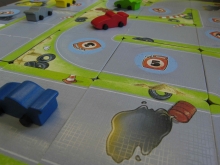 |
Go 0 to 100!3 Math 1 - Properties of Multiplication and... BRRRMMMM, the motors are revving. The red light jumps to green and the vehicles set off at full throttle. Watch out! Oil slicks on the circuit means the cars risk skidding. Which lucky player will be the best at bluffing and using good tactics to finish the round first? |
 |
Gopher It!K Math 1 - Numbers to 10 Who wants to win the Gopher Trophy prize? The player who does must be risky yet wise. Collect the Gopher snacks in ones, twos, and threes... and stop gathering food whenever you please. Get exactly six and not any more, to be the player with the highest score! |
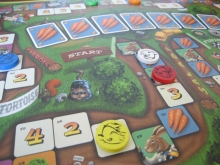 |
Hare & TortoiseALG I M3 - Linear and Exponential Functions This game features the legendary race between the hare and the tortoise, but with a twist. Each player plays both parts at different stages of the race. Sometimes it is best to race like rabbit; others, it is best to move slowly and cautiously like the turtle. In the end, it is the best combination of the two strategies that will win the race. Great fun for families, but also some serious strategy for serious players. |
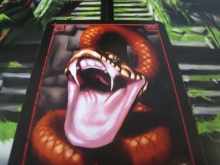 |
Incan Gold7 Math 5 - Statistics and Probability Players venture forth, as a group, into an abandoned temple looking for treasure. As they progress, they may encounter countless riches or unseen dangers. Players must decide after every step if they wish to venture further in search of more treasure, or if they want to turn around and leave with what they have. Those who continue on have the opportunity to increase their riches, but also run the risk of coming across two of the same danger, thereby losing everything. |
 |
Marrakech7 Math 5 - Statistics and Probability The bazaar is bustling: it's the big day at the rug market! The best salesperson will soon be named! Each player is a salesperson who tries to outwit the others. Each player takes it in turns to throw the dice and then move Assam, the market organiser. If Assam stops on an opponent's rug, the salesperson must make a payment to its owner before putting one of their own rugs on an adjoining space. When the last rug has been laid, the total number of visible rugs and the number owned by each salesperson are added up: the best player wins! |
 |
Modern ArtPRE-CALC M5 - Probability and Statistics Buy your way to fame & fortune with Modern Art, the high stakes gallery auction game. Players compete to gain the most money by buying and selling paintings at auctions and reselling them for profit. Whoever offers the top bid owns the painting and sells it at the end of the round. The price the painting fetches is based on the popularity of the artist and how well his paintings have sold in the past. The player with the most money at the end of four rounds of buying and selling wins. |
|
|
New York Slice12.E2 - Individuals and Businesses in Markets | 12.E3 - Impact of American Capitalism on Global... | 4 Math 5 - Fraction Equivalence, Ordering, and... In New York Slice, each player slices pizzas into portions, giving their opponents first choice, while they take the leftovers. There are a dozen kinds of pizza to work with, from veggie to hawaiian to meat lover's, and each player decides if they want to eat or keep some of the slices, building the best collection of pizzas possible! Each time a player slices a pizza, there's a different special to go along with it, whether it's allocated to one of the portions or placed on its own. Specials provide the player with special powers or points, such as calling dibs on a slice before the pizza is divided, getting one of the normally-out-of-the-game "mystery slices', having an opportunity to "sneak a slice" by moving it from one portion to another when they choose, and many more—there are 14 different "Today's Specials" in the game. |
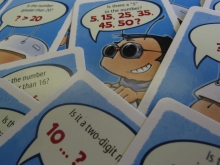 |
Number Chase6 Math 3 - Rational Numbers To chase down the number is your task. After each guess, you'll get to ask, "Is it even?" "Is is odd?" "Is it great?" Is it small?" "Is it a two-digit number?" "Is there a "5" at all?" Each clue that is read helps you to find, The number that other players have in mind! In each round a different player is the "Writer". The writer thinks of a number from 1 to 50 and secretly writes it down on a slip of paper. One at a time, each of the other players tries to guess the number. If the guess is wrong, the number is turned over to reveal a question, and the answer will be a clue to help out the other players. If the guess is correct, the player receives that number card as a point. The first person to collect three cards is the winner! |
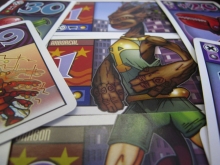 |
Numbers League3 Math 1 - Properties of Multiplication and... Numbers League - Adventures in Addiplication is a stand alone superhero themed card game where your basic math skills can save the day. The more you play the sharper these skills will become until no villain is safe from your numerical onslaught. The Infinity Level Expansion is included which increases the difficulty by introducing decimals to the equation! |
 |
Pearl Diver5 Math 1 - Place Value and Decimal Fractions | 2 Math 2 - Addition and Subtraction of Length... | 5 Math 2 - Multi-Digit Whole Number and Decimal... | 5 Math 3 - Addition and Subtraction of Fractions | 3 Math 5 - Fractions as Numbers on the Number Line | 4 Math 6 - Decimal Fractions | 2 Math 8 - Time, Shapes, and Fractions as Equal... Navigate the number line while diving among shipwrecks and sunken ruins. Will you find a pearl, or an old boot? Watch out for the electric eel! Pearl Diver teaches properties of numbers, how to plot numbers, how to visualize quantity on the number line, how to order numbers, and how to use the number line as a visual model for mathematical operations. |
|
|
Piece o Cake12.E2 - Individuals and Businesses in Markets | 12.E3 - Impact of American Capitalism on Global... | 4 Math 5 - Fraction Equivalence, Ordering, and... Everyone knows the cake rules: one person cuts,the other chooses. In this way, one makes the slices as equal as possible so that one does not end up with the short end. But this rule does not apply to "...aber bitte mit Sahne (...but please, with whipped cream)." Here a person can cleverly offer larger pieces to the others and still get the most in the end. 5 cakes with 11 slices of different varieties are divided. Each variety awards a different amount of points. One can immediately eat slices to guarantee a number of points, or collect them in the hope of scoring bonus points for having the most of that variety at the end of the game. Only skilled dividers with an eye on their opponents’ pieces can score the most points and win the game. |
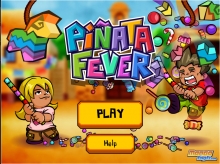 |
Piñata Fever1 Math 1 - Sums and Differences to 10 | 2 Math 1 - Sums and Differences to 20 | 6 Math 3 - Rational Numbers | 1 Math 4 - Place Value, Comparison, Addition/... | 3 Math 5 - Fractions as Numbers on the Number Line In this math game you’re the host of a crazy piñata party. To keep the party pumping you need to keep the candy jar topped up – and the only way to get more candy is by smashing piñatas! These colourful, goody-stuffed toys descend slowly from the top of the play area. You must move quickly to intercept them by adding and subtracting positive and negative numbers. Once in position, smash open the piñatas to release their tasty treats! Think fast because if you run out of candy, the party’s over! |
 |
Pirate Artithmetics3 Math 1 - Properties of Multiplication and... In search of the mysterious treasure of the famous Pirate Arithmeticus, the arithmetic pirates have landed on the treasure island. Equipped with an old treasure map they set off on their search; a hundred steps towards the North, then twenty steps towards the left, past the statue of the monkey and fifty steps in the direction of the pig palm tree. Once they have reached the target, the pirates dig down impatiently into the earth. There it is! A treasure chest brimming with gold coins. When it comes to dividing up the treasure, the pirates have to prove their arithmetical abilities as only the cleverest pirate gets the largest share of the booty. |
|
|
Prime Climb2 Math 1 - Sums and Differences to 20 | 3 Math 1 - Properties of Multiplication and... | 3 Math 3 - Multiplication and Division with Units... | 4 Math 3 - Multi-Digit Multiplication and Division Prime Climb is a new board game that uses arithmetic to open a beautiful world of possibility. Players race to be the first to get to the center of the board while avoiding getting knocked back to the start by other players. Highlighting the power of the prime numbers, Prime Climb is mathematical, deep, creative, and fun. Each player controls two pawns that start at the 0 circle. Players take turns rolling two 10-sided dice and applying the values to their two pawns using any of the four basic arithmetic operations: addition, subtraction, multiplication, and division. The first to get both pawns into the 101 circle exactly wins the game! Be careful: if another player lands on you, you get sent back to the start. Along the way, players who land on the red circles collect Prime cards—some are helpful now, some are helpful later, and a few are trouble! One of the great innovations of Prime Climb is the coloring scheme. Each of the prime numbers less than 10 has its own color: 2 is orange, 3 is green, 5 is blue, and 7 is purple. After 10, each prime number is red. Any number that is not a prime is a mix of colors that corresponds to its prime factors. For example, 14 = 2 x 7, so the 14 circle is half orange and half purple. The color coding allows players a way to quickly analyze the factors and multiples of the numbers on the board. This helps players check their multiplication and division, and even allows kids who haven't yet learned multiplication to play the game. |
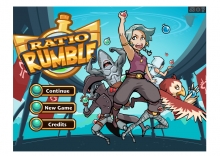 |
Ratio Rumble6 Math 1 - Ratios and Unit Rates | 7 Math 4 - Percent and Proportional Relationships The battle is on in this game where you build your own potions! Check your ratios to win this mixture mix-off! Ratio Rumble addresses equivalent ratios, as established by the National Council of Teachers of Mathematics (NCTM). |
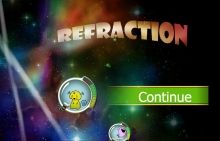 |
Refraction5 Math 2 - Multi-Digit Whole Number and Decimal... | 5 Math 3 - Addition and Subtraction of Fractions | 4 Math 5 - Fraction Equivalence, Ordering, and... | 4 Math 6 - Decimal Fractions Refraction is an online puzzle game for teaching fractions. The game requires knowledge of fractions to succeed. In Refraction, the player must partition lasers in order to power spaceships containing various animals who have gotten stuck in space. These animal spaceships all require different fractions of the lasers, and the player is given several pieces that split and bend the lasers to reach the animals and satisfy these requirements. These mechanics can be used to teach many important fraction concepts, such as equal partitioning, addition, multiplication, mixed numbers, improper fractions, and common denominators. The game itself is instrumented so that it records everything the player does, allowing teachers and researchers to analyze play data. |
 |
School! Ready, Set, Go!2 Math 8 - Time, Shapes, and Fractions as Equal... Come on, let's go to school! How exciting the everyday life of a school kid can be. Only the one who gets up promptly and is on time at the bus stop will get to school on time. There the hurly-burly continues. With all the other children and the interesting things to learn, the day passes in a flash. While playing, the children experience how their day will change when starting school. Further on, memory and handling of the clock are introduced in a playful way. Competitive and cooperative play variants included. |
|
|
Secret Code 13+42 Math 1 - Sums and Differences to 20 | 3 Math 1 - Properties of Multiplication and... | 1 Math 2 - Introduction to Place Value Through... | 3 Math 3 - Multiplication and Division with Units... Tonight is the night the secret mission "Amun Re" begins. The team, made up of four cunning secret agents, breaks into the museum and thanks to their precise calculations cracks the tricky codes of the security installation. Be it through addition or subtraction, multiplication or division, the numbers on the dice have to be combined so that the results coincide with the code numbers. Who in Secret Code 13+4 will be the first to overcome all the light barriers to get hold of the precious Amun Re mask? |
|
|
Smelly Molly (Moly Mief)Pre-K Math 1 - Counting to 5 Skunks are famous for clearing rooms. If you want a table at a trendy and crowded restaurant, for example, you know to bring a skunk along with you in order to clear the room. In-laws won't leave the table after Thanksgiving? Better break out the skunk. In Molly Mief, players go searching for the critters that scamper away when the eponymous Molly Mief goes for a stroll in the woods. At the start of each round, one player rolls the animal die to see which animal players want to find. Then someone turns over one of the 30 postcard-sized images in the game. When you think you know the right animal count, grab one of the five "track" cylinders – numbered 1-5 – from the table. Once everyone has grabbed a cylinder or passed, you see which player guessed the right number. That player claims the image card, and the first player to collect six cards wins. |
|
|
SpikyPre-K Math 1 - Counting to 5 One after another, you sense the dragons based on the number of spikes and let them come out of the bag. The dice decides on which dragon must be found. For each correct attempt you receive a flint stone. Using considerable concentration and sensitivity, you can be the first to win five flint stones. |
|
|
Sum SwampPre-K Math 1 - Counting to 5 | K Math 3 - Comparison of Length, Weight, Capacity... Math becomes an adventure with this addition and subtraction game that takes kids on a journey through Sum Swamp. They’ll make their way over the crocodile shortcut and through the endless loop by adding and subtracting the numbers on the dice. Includes 12" x 17" game board, four swamp critter markers, two number dice and operation die |
 |
The Color DwarvesPre-K Math 2 - Shapes The children walk with dwarf Colorful through the vivid Colorland. They visit the red dwarf, the green one ...Who will be the first to collect the presents? A fantastic educational game collection for 2-4 players about recognizing and classifying colors. Includes co-operative variation which also can be played solo. |
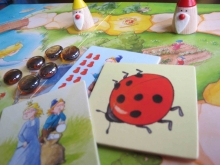 |
The Number Dwarves (Zahlenzwerge)Pre-K Math 1 - Counting to 5 The spritely imp, Hotchpotch, has buried precious treasures in the Land of Numbers. The number dwarves immediately set off to search for the mysterious treasure. By counting, they approach their target and sometimes the fairy Forget-Me-Not helps them. The cheeky imp however is not far and makes players participate in his nonsense. An entertaining and educational game of counting and planning. |
 |
The Wrecks FactorALG I M4 - Polynomial and Quadratic Expressions,... In this maths game you are the chief of rescue operations for the Bermuda Rectangle. Your task is to protect the ships crossing this notorious body of water, keeping watch for any vessels that fall prey to its strange and terrifying phenomena. Stricken ships will transmit their search area coordinates encoded as a quadratic expression. You must decipher the code before the ship sinks, and dispatch a rescue chopper to locate life rafts and save the crew. It’s a tough job but we know you can handle it, Chief! |
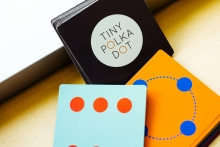 |
Tiny Polka DotK Math 1 - Numbers to 10 | K.CC - Counting & Cardinality | PK.CC - Counting & Cardinality | Pre-K Math 1 - Counting to 5 | K.OA - Operations & Algebraic Thinking | PK.OA - Operations & Algebraic Thinking | K.NBT - Number & Operations in Base Ten | K Math 4 - Number Pairs, Addition and Subtraction... Tiny Polka Dot cards come in six suits, each with eleven cards representing the numbers from 0 to 10. Each suit uses a different representation. These are Ten Frames, Big and Little Dots, Circles, Doubles Plus One, Numerals, and Dice Patterns. Tiny Polka Dot comes with 12 different games, designed to support kids as they develop flexibility, competence, and a love of numbers. |
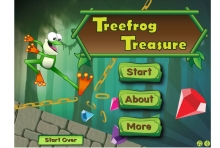 |
Treefrog Treasure3 Math 5 - Fractions as Numbers on the Number Line | 4 Math 6 - Decimal Fractions | 2 Math 8 - Time, Shapes, and Fractions as Equal... Treefrog Treasure (ages 4+) is a platformer game that allows players to explore different worlds as a frog and learn fractions and number line concepts. When certain obstacles are reached, a player must properly identify a target symbol, whole number, or fraction on a number line to collect gems and complete the level. Hints are provided to help the player reach the correct answer when mistakes are made. |
|
|
Trinkets (Krims-krams)Pre-K Math 2 - Shapes What a mess! Squirrel Sammy Walnut likes to collect trinkets, and they are piled up all over the place in his home. The bicycle helment is in the refrigerator and the toothbrush underneath the sofa. It's time to clean up! But what will fit in which box? Only the one who helps Sammy to tidy up and find the corresponding boxes for the colors things will receive the valuable nut coins! In Trinkets, the players help Sammy to tidy up his trinkets. All the various things are different sizes, however, and each will fit only in one specific box. Sammy has to go from box to box to see what might fit and then place the corresponding piece. To get that nut coin as a reward, the item must fit perfectly. The first player to collect five nut coins wins! |
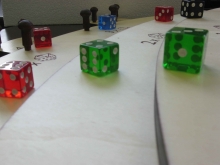 |
Tumblin' Dice3 Math 1 - Properties of Multiplication and... Put your skills and nerves to the test with Tumblin-Dice. One after the other you will propel your dice on the scoring track with a flick of your fingers as far as you can, while ejecting the competition if possible. The perfect flick will yield you 24 points with a "6" on the "4x" level, but don't take your score for granted. The other players will try to knock your dice off the scoring track with theirs. Once all the dice have been played the round is over and the scores are tallied. The first player or team to reach 301 wins the game. Lots of different variants for different levels of fun. |